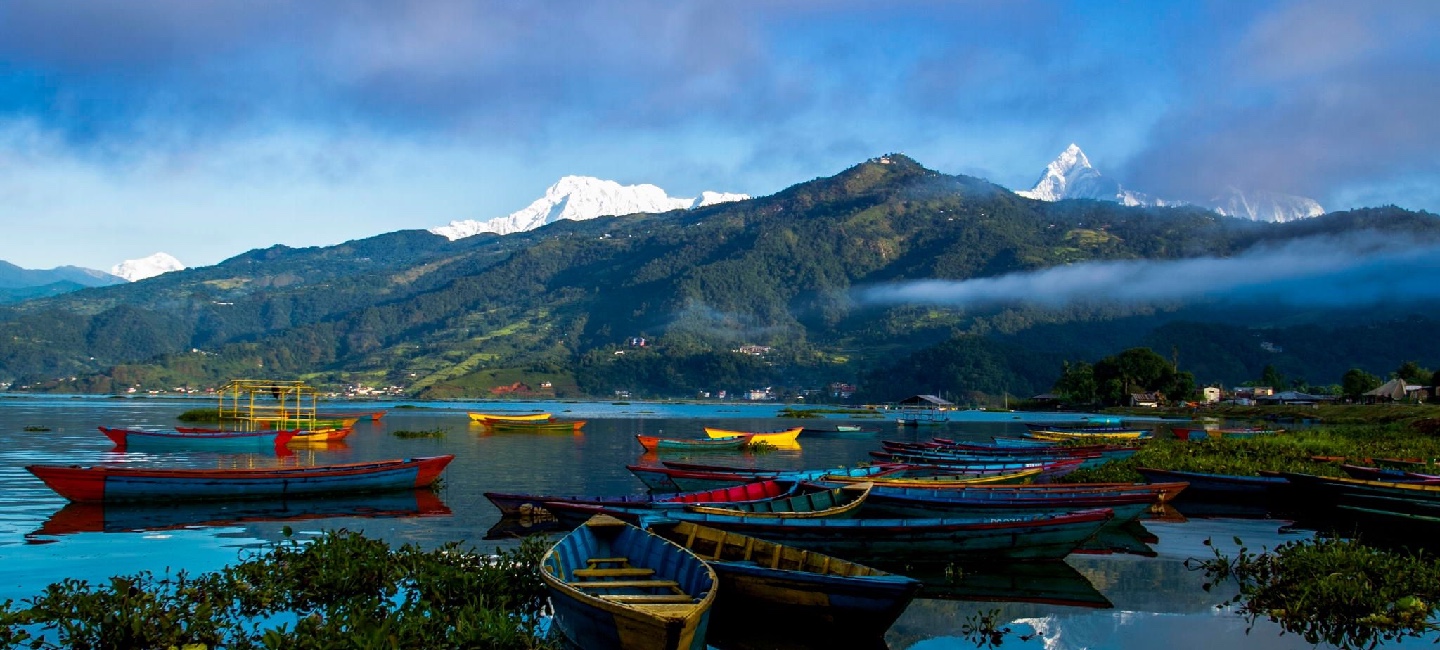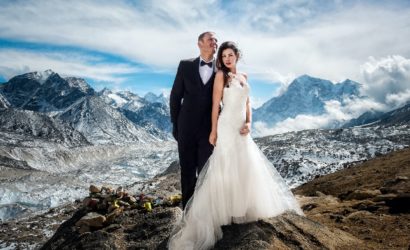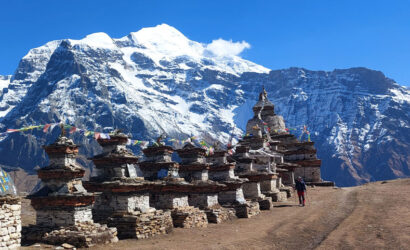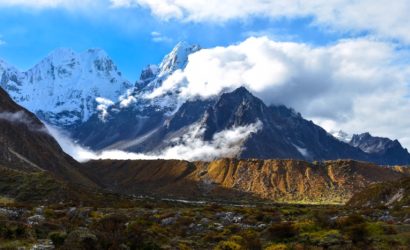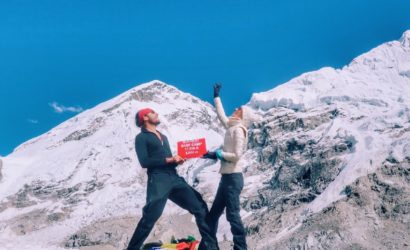Annapurna and Chitwan in luxury trip combines short Himalayan trekking and wildlife safari in Chitwan national Park. Poon Hill Trek is one of the easiest and best short treks in the Annapurna region.
We start in Pokhara traveling through beautiful rhododendron and oak forests and green hills and then pass through Poon Hill, which offers panoramic views, a wonderful place to see the sunrise and sunset. The Annapurna and Chitwan in luxury discovers the foothills of central Himalaya passing through different villages, providing spectacular views of Annapurna and Dhaulagiri massifs.
The unusual wide range of climatic zones in this area provides an opportunity to see different flora and fauna. This place is rich in hidden treasures of Nepalese culture and tradition. The diverse lifestyles of people residing in this region is dominated by Magars and Gurungs, famous for Gorkha soldiers who served in British and Indian armies.
This luxury Annapurna and Chitwan trip, the trail winds through patchwork valleys, dense mossy forests and past icy waterfalls where you can stop to cool your face. Around every corner is a tantalizing glimpse of the high mountains, whole horizons of which will be revealed to you as you reach the high points of your trek.
Chitwan is the richest wildlife reserve in Asia with an area of 932 sq,km established in 1973. In 1984 this Park was Elephant designated by UNESCO as a natural world Heritage Site in view of the scope and contribution of this Park. The wildlife safari in the Chitwan national park is a fun and adventurous activity.
Upon your arrival in the Kathmandu airport after completing your custom formalities Visa, etc. pick up your luggage and look for our airport representative from Himalaya Discovery, who will display your name on the board at the arrival gate. You will be greeted by our representative and transferred to the hotel by private tourist vehicle.
Today is free for sightseeing in Kathmandu. You may wish to visit Durbar Square in the heart of the old city where the old Royal Palace, with its intricate woodcarving is located. The whole area is a maze of temples and images.
Leading away from the square in all directions are narrow alleys, full of the most amazing variety of shops and stalls. Some of these landmarks are considered World Heritage Sites including the historic Bhaktapur Durbar Square, the famous ‘Monkey Temple’ Swayambhunath and Buddhists shrine Buddhanath which is one of the largest Stupas in the world.
There will also be a full trip briefing today with gear check. In case you need to hire or buy equipment locally there will be time to do this today.
Your guide will pick you up at 6:30 am from the hotel and take you to the tourist bus station. The bus leaves to Pokhara at about 7:30 am. Also known for its panoramic view of Annapurna and Machapuchare (Fishtail) in the North, Dhaulagiri in the West and Lamjung Himal and Manaslu in the South.
Pokhara is a lovely valley on the banks of the Fewa Lake. It’s lower than Kathmandu and much less hectic, making it the ideal starting point for your journey. Overnight at hotel in Pokhara.
We start our Himalaya journey at Nayapul after 1 hour driving by private vehicle from Pokhara. After 15 minutes short walk along the bank of the Modi Khola, we reach Birethanti (1015 m) a large village that has many shops and teahouses.
From there, the trail continues through the village. The trail follows the north bank of the Bhurungdi Khola. From there, the trail climbs steadily up the side of the valley to Hille at 1495 m and after the short climb, we reach Tikhedhunga at 1570 m.
Today’s walk offers a short and relatively easy day, during the journey which allows us to become used to the experience of trekking in Nepal. Overnight at guesthouse.
Leaving Tikhedunga, we begin our journey with a steep climb to Ulleri. Ulleri is a large Magar village at 2070 m.
The trail then continues to ascend more gently, through fine forests of oak and rhododendrons towards Banthanti at 2250 m, then we trek towards Nangethanti at 2460 m.
After an hour of walking this brings you to Ghorepani at 2840 m. Overnight at guesthouse.
Today, very early in the morning, we start an hour hiking to Poon Hill at elevation of 3210 m, a brilliant spectacle; this vantage point provides an unobstructed view of sunrise over the high Himalayas.
There we spend about 1 hour, we then return to Ghorepani we take a hot breakfast at the hotel then we trek to Tadapani (2610 m).
Along the trail towards Tadapani, we make climb along ridges and through pine and rhododendron forests to Deurali (2960 m). After that we descend to the Banthanti, we then turn off to Tadapani. Overnight at guesthouse.
From Tadapani, the trail descends through forests to Ghandruk. Ghandruk is a village of Gurung people, one of the ethnic groups of Nepal; they have their own dialect, culture, costume and lifestyle.
Ghandruk is also home to many Gurkha soldiers. It is a famous destination for trekkers as it is known for its beautiful mountain views and within easy reach from Pokhara and Kathmandu.
We have the afternoon to visit the Annapurna conservation office, Museum and discover the village. Overnight at guesthouse.
“Hot spring” After having breakfast we are going downhill to the hot spring “Jhinu danda” to relax in this pool of natural hot spring.
On the way we will encounter local people, walking through tiny villages, small rivers, rice and potatoe fields and landslide before reaching the hot spring. Overnight at guesthouse.
Today, we are going to end our trek at Nayapul after a short drive back to Pokhara. Enjoy the delights of Pokhara, taking a trip to a spa massage or listening to live music. Or simply relax in a quiet café, restaurant overlooking the Fewa Lake. Overnight at hotel in Pokhara.
On arrival at resort, where you will be offered refreshment & briefing & its facilities.
– Lunch
Village tour to a nearby ethnic Tharu village where you will learn about the life and lifestyle of the Tharus. Visit to the National Park Visitor’s centre where you can learn more about the history of the National Park and about wildlife & Sunset view from the bank of Rapti River.
– Tharu Cultural Dance Presentation (which you will also participate)
– Dinner
– Wake up
– Breakfast
Canoe ride along the Rapti River. An excellent opportunity for Bird Watching and for seeing the 2 rare species of Crocodiles; the Marsh Mugger and the fish eating Gharial. + Jungle Walk + on the way back one can enjoy the Elephant bathing
– Lunch
Elephant Safari. An excellent opportunity to see four different kinds of Deer, Rhinoceros, Wild Boar, Monkey, Leopard, Sloth Bear and the Royal Bengal Tiger (If you are lucky). You will also encounter many other smaller mammals that have made Chitwan their home.
– Tharu Cultural Dance presentation or Slides Show Presentation.
– Dinner
– Wake up
– Visit to the Government Elephant Breeding Centre
– Breakfast
– Departure
In the evening, we will have a farewell dinner in a traditional Nepalese restaurant with cultural performances.
Today you can either stay back and enjoy a free day in Kathmandu or leave for your respective countries.
Our representatives will drop you off at the airport according to your flight schedule.

